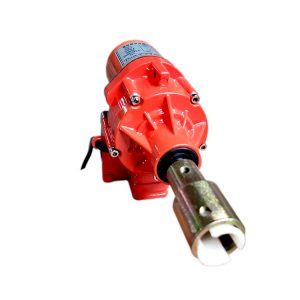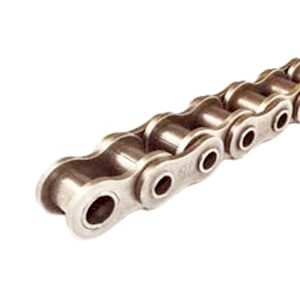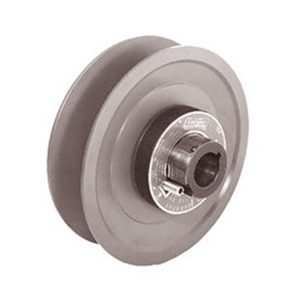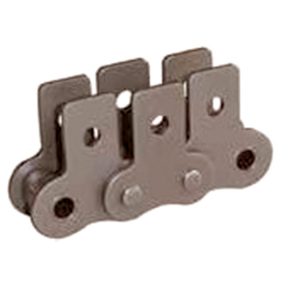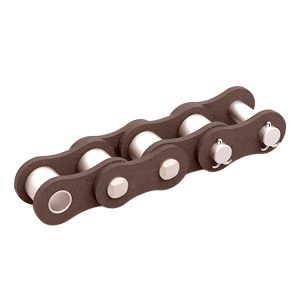Product Description
Description
HDM De-clutchable wormgear offers simple and reliable manual positioning of the valves, dampers and other quarter-turn devices when overriding existing pneumatic, electric or hydraulic quarter-turn actuators. All unit are suitable for both indoor and outdoor installation. The modular design is to provide the most efficient and effective solution to a full range of manual overriding requirements.
Main Product features
To engage manual operation, first pull out the lock handle and then rotate the clutch lever in anti-clockwise direction until engagement takes place. To return to automatic mode, first pull out the lock handle and then rotate the clutch lever in clockwise.
Remark:The bottom center of the HDM-4 is either F10/F14 or F10/F12
| New Manual Override | Countershaft | Valve Connection | Actuator Connection | ||||||||||
| b1 | N | b2 | M | D1 | 4-M1 | D2 | 4-M2 | E | D3 | 4-Φ1 | D4 | 4-Φ2 | |
| HDM-1 | 14 | 22 | 14 | 16 | Φ50 | 4-M6 | Φ70 | 4-M8 | 70*70 | Φ50 | 4-Φ6.5 | Φ70 | 4-Φ8.5 |
| HDM-2 | 17 | 22 | 17 | 18 | Φ70 | 4-M8 | Φ102 | 4-M10 | 95*95 | Φ70 | 4-Φ8.5 | Φ102 | 4-Φ10.5 |
| HDM-3 | 22 | 28 | 22 | 22 | Φ102 | 4-M10 | Φ125 | 4-M12 | 114*114 | Φ102 | 4-Φ10.5 | Φ125 | 4-Φ12.5 |
| HDM-4 | 27 | 32 | 27 | 30 | Φ102 | 4-M10 | Φ125 | 4-M12 | 129*129 | Φ125 | 4-Φ12.5 | Φ140 | 4-Φ16.5 |
| HDM-5 | 36 | 45 | 36 | 38 | Φ140 | 4-M16 | / | / | 156*156 | Φ140 | 4-Φ17 | Φ165 | 4-Φ21 |
| HDM-6 | 46 | 50 | 46 | 48 | Φ165 | 4-M20 | / | / | 160*160 | Φ165 | 4-Φ22 | / | / |
| New Manual Override | A | B | ΦC | F | T | Y | H | S | K | Ratio | Rated Input | Rated Onput |
| HDM-1 | 90 | 55 | Φ88 | 115 | 44 | 145 | 120 | 53 | 10 | 26:1 | Nm | 250Nm |
| HDM-2 | 125 | 64 | Φ110 | 135 | 62.5 | 178 | 133 | 56.5 | 13 | 28:1 | Nm | 450Nm |
| HDM-3 | 140 | 71 | Φ129 | 166 | 70 | 212 | 180 | 68.7 | 12.5 | 38:1 | Nm | 700Nm |
| HDM-4 | 188.5 | 93 | Φ174 | 202 | 94 | 280 | 195 | 84 | 15 | 54:1 | Nm | 1200Nm |
| HDM-5 | 222 | 110 | Φ205 | 245 | 110 | 315 | 225 | 92 | 15 | 80:1 | Nm | 2000Nm |
| HDM-6 | 252 | 120 | Φ275 | 280 | 125 | 320 | 252 | 102 | 15 | 78:1 | Nm | 3000Nm |
1. Question:What is your main products?
Answer:Our main products are Pneumatic Actuators, Electric Actuators, Actuated Valves And Valve actuators Accessories..
2. Question:Are you a trader or manufacturer ?
Answer: We are the pneumatic actuators and electric actuators manufacturer , we have ability to do the customization products with experienced team, And we have own factory and production line.
3. Question:How do your make the quality guarantee for actuators?
Answer:We have our own quality control system for incoming and outgoing of the materials, every product will be under controlled and tested before delivery to our customer , and we also provide 18 months guarantee ,beside we provide technical supporting .
4. Question:When can I receive the Price of valve actuators ?
Answer:We will give the Quotation Within 24 hours after we get your inquiry .Or Your can call or message us if it’s quite urgently.
5. Question:How to order our pneumatic actuators and electric actuators ?
Answer:Please send us your inquiry by Email, , etc. we need to know the following informations before giving the formal Quotation.
1) Product information in details, Quantity, Other requirements
2) Delivery time required
6. Question:How can I get a sample to check your quality?
Answer:Contact with our sales expert to arrange the sample delivery. Please send us the details of the sample before placing the order.
7. Question:Shall we pay the sample cost and transportation cost ?
Answer:We will provide the sample by free of charge. Your will bear the freight cost.
8. Question:How long to prepare the sample ?
Answer:Most of our products are under regular production and some of them we keep in stocks.
9. Question:How to delivery the sample to our place?
Answer:Your can provide your forwarders contacts if any, or we will arrange it for you.
10. Question:What about the delivery date if we place the formal order ?
Answer:Usually it takes 15~20days on the production .We know that on-time delivery is very crucial to our customers to meet dead-lines.
We monitor and expedite our supply chain to ensure that we delivery our products to our customers on-time all the time.
| Application: | Motor |
|---|---|
| Function: | Change Drive Direction, Speed Changing |
| Layout: | Coaxial |
| Hardness: | Soft Tooth Surface |
| Installation: | Torque Arm Type |
| Step: | Double-Step |
| Samples: |
US$ 50/Piece
1 Piece(Min.Order) | |
|---|
| Customization: |
Available
| Customized Request |
|---|
Importance of Lubrication in Gearbox Performance
Lubrication plays a critical role in ensuring the optimal performance, longevity, and reliability of gearboxes. Proper lubrication provides several key benefits:
- Reduces Friction and Wear: Lubrication forms a protective layer between gear teeth, bearings, and other moving components, reducing friction and minimizing wear and tear.
- Heat Dissipation: Lubricants help dissipate the heat generated during gear operation, preventing overheating and potential damage to components.
- Noise Reduction: Adequate lubrication can dampen noise and vibration produced by gear meshing, leading to quieter and smoother operation.
- Sealing and Contaminant Prevention: Lubricants create a barrier that seals out contaminants like dust, dirt, and moisture, preventing their entry and reducing the risk of corrosion and damage.
- Enhanced Efficiency: Proper lubrication reduces energy losses due to friction, improving the overall efficiency of the gearbox.
- Extended Lifespan: Lubrication helps prevent premature component wear and failure, extending the lifespan of the gearbox and minimizing the need for costly repairs or replacements.
- Optimal Performance: Gearboxes operate within specified tolerances when properly lubricated, ensuring they deliver the intended performance and functionality.
It’s essential to use the recommended lubricant type, viscosity, and change intervals specified by the gearbox manufacturer to ensure the best possible performance and longevity. Regular monitoring and maintenance of lubrication levels are crucial to preserving the health of the gearbox and its components.
editor by CX 2023-12-15
China Professional Mtd 756-04129 B1sb280646 Heavy-Duty Flat Idler Pulley pulley system
Product Description
Description: #eastarsmallenginerepair
Idler Pulley for Cub Cadet RZT50 LT1045 756- 0571 9 956- 0571 9 756- 0571 9B 956- 0571 9
· Replaces OEM Part # 956- 0571 9 753-5711 756- 0571 9 756 0571 9C
· Fits for Cub Cadet Part # 753-5711, 756- 0571 9B, 756- 0571 9C, 956- 0571 9, 956- 0571 9C,GTX1054, GTX2154LE, LGT1050, LGT1054, LGTX1050, LGTX1054, CC760, CC760ES, i1042, i1050, GT1054, GT2544, GT2550, GT2554, RZT-L50, RZT-L54, RZT-S42, RZT-S46, RZT-S50, RZT-S54, SLTX1550, SLTX1054, LT1040, LTX1040, LTX1042, LTX1050, RZT42, RZT50, RZT54, RZT-L42, RZT-L 46
· Fits for Troy Bilt Part # GT50, GT54, RZT 42, RZT 50, TB42, TB2142, TB2246, TB2450, Pony, Bronco, Super Bronco, Horse, Big Red Horse, Range Rider, Mustang, Mustang XP, Colt XP
| Replaces OEM Part # 956- 0571 9 753-5711 756- 0571 9 756 0571 9C | ||
| Fits for Cub Cadet Part # | 75 | 753-5711, 756- 0571 9B, 756- 0571 9C |
| 956 | 956- 0571 9, 956- 0571 9C | |
| GTX | GTX1054, GTX2154LE | |
| LGT | LGT1050, LGT1054,LGTX1050, LGTX1054 | |
| CC | CC760, CC760ES | |
| i | i1042, i1050 | |
| GT | GT1054, GT2544, GT2550, GT2554 | |
| RZT | RZT-L50, RZT-L54, RZT-S42, RZT-S46, RZT-S50,RZT-S54 | |
| SLTX | 1550, SLTX1054 | |
| LT | LT1040, LTX1040, LTX1042, LTX1050 | |
| RZT | RZT42, RZT50, RZT54, RZT-L42, RZT-L 46 | |
| ID | 3/8″ |
| OD | 4-7/8″ |
| FLAT OD | 4-1/4″ |
| Flat Width | 3/4″ |
| Overall Width | 1-1/8″ |
| OFFSET | 1/16″ |
| Material | Metal |
| Certification: | CE, ISO |
|---|---|
| Pulley Sizes: | Type A |
| Manufacturing Process: | Forging |
| Material: | Carbon Steel |
| Surface Treatment: | Electroplating |
| Application: | Chemical Industry, Grain Transport, Mining Transport, Power Plant, Outdoor Power |
| Samples: |
US$ 19.99/Set
1 Set(Min.Order) | |
|---|
| Customization: |
Available
| Customized Request |
|---|
How do pulleys function in various types of vehicles and machinery?
Pulleys play crucial roles in numerous types of vehicles and machinery, enabling the transmission of power, control of mechanical systems, and efficient operation. Here’s how pulleys function in various applications:
1. Automotive Engines: In vehicles, pulleys are commonly used in the engine’s accessory drive system. The crankshaft pulley, also known as the harmonic balancer, is connected to the engine’s crankshaft and drives various accessories such as the alternator, power steering pump, and air conditioning compressor. The pulleys enable the transfer of rotational power from the engine to these accessories, allowing them to perform their respective functions.
2. Belt-Driven Systems: Pulleys are extensively used in belt-driven systems across various machinery and equipment. These systems utilize belts, such as V-belts or timing belts, which wrap around pulleys to transfer power. Examples include conveyor systems, industrial machinery, agricultural equipment, and HVAC systems. The pulleys provide the necessary grip and tension to ensure efficient power transmission and drive system operation.
3. Cranes and Hoists: Pulleys are integral components of cranes and hoists, enabling the lifting and movement of heavy loads. Multiple pulleys, often arranged in a block and tackle configuration, are used to create mechanical advantage, reducing the effort required to lift the load. By distributing the load’s weight over multiple strands of rope or cable, pulleys allow for controlled lifting and precise positioning of objects.
4. Construction Equipment: Pulleys are found in various types of construction machinery. For example, in excavators and cranes, pulleys are used in the wire rope systems for lifting and lowering the boom, bucket, or other attachments. Pulleys help in managing the forces involved in these operations, providing smooth and controlled movement.
5. Elevators: Pulleys are essential components in elevator systems. Elevator cars are suspended by steel cables that run over pulleys. These pulleys are connected to an electric motor through a system of gears and sheaves. As the motor rotates the pulleys, the elevator car moves up or down. Pulleys in elevator systems help in efficiently transferring power and maintaining the stability and safety of vertical transportation.
6. Exercise Equipment: Pulleys are widely used in exercise machines and gym equipment to provide resistance and enable adjustable resistance levels. By incorporating pulley systems with different configurations and cable arrangements, exercise equipment can offer a variety of exercises targeting specific muscle groups.
7. Marine Applications: Pulleys are utilized in various marine applications, such as sailboats and winches. Pulleys help in controlling the movement and tension of ropes and cables, enabling sail adjustments, mast raising and lowering, and other rigging operations.
8. Garage Doors: Pulleys are employed in garage door mechanisms to facilitate the smooth opening and closing of the doors. They are used in conjunction with cables or belts, allowing for the transfer of force from the door opener to the door itself.
These examples demonstrate the versatility and importance of pulleys in a wide range of vehicles and machinery. By utilizing pulleys, these systems can achieve efficient power transmission, mechanical advantage, controlled movement, and improved functionality.
How do pulleys contribute to the functioning of bicycles and motorcycles?
Pulleys play important roles in the functioning of both bicycles and motorcycles, aiding in power transmission, speed control, and overall mechanical efficiency. Here’s how pulleys contribute to the operation of these vehicles:
1. Bicycles:
– Derailleur System: In most modern bicycles, pulleys are used in the derailleur system. The derailleur is responsible for shifting the bicycle chain between different gears on the front and rear sprockets. Pulleys, often referred to as jockey wheels, are positioned in the derailleur to guide and tension the chain as it moves between gears. They ensure smooth and precise shifting, allowing the rider to adapt to various terrains and maintain an optimal pedaling cadence.
– Belt Drive Systems: Some bicycles use a belt drive instead of a traditional chain drive. Belt drives employ a pulley system that consists of a front pulley attached to the pedal crank and a rear pulley attached to the rear wheel hub. The belt is wrapped around these pulleys, transferring power from the rider’s pedaling motion to propel the bicycle forward. Pulleys in belt drive systems enable efficient power transfer, reduce maintenance needs, and provide a quieter and cleaner alternative to chain drives.
2. Motorcycles:
– Clutch System: Pulleys, known as clutch pulleys, are utilized in motorcycle clutch systems. The clutch connects the engine to the transmission and allows the rider to engage or disengage power transmission to the rear wheel. When the clutch lever is pulled, the clutch pulley separates the engine’s rotational motion from the transmission, disengaging power transfer. Releasing the clutch lever brings the pulley back into contact, engaging power transmission and enabling the motorcycle to move.
– Variable Transmission Systems: Some motorcycles employ pulleys in variable transmission systems, such as continuously variable transmissions (CVT). CVTs use a pair of pulleys connected by a belt or chain. By changing the diameter of the pulleys, the CVT adjusts the gear ratio continuously, providing seamless and efficient power delivery across a wide range of speeds. Pulleys in variable transmission systems contribute to smooth acceleration, improved fuel efficiency, and enhanced riding comfort.
– Drive Belt Systems: Pulleys are also utilized in motorcycles equipped with belt drive systems. Similar to bicycles, these systems consist of a front pulley connected to the engine’s crankshaft and a rear pulley connected to the rear wheel. The belt runs around these pulleys, transferring power from the engine to the rear wheel. Belt drive systems offer advantages such as reduced maintenance, quieter operation, and smoother power delivery compared to traditional chain drives.
Overall, pulleys are integral components in bicycles and motorcycles, contributing to smooth gear shifting, efficient power transmission, and improved overall performance. Whether in derailleur systems, belt drive systems, clutch systems, or variable transmission systems, pulleys play a vital role in enhancing the functionality and ride experience of these vehicles.
Can you explain the basic principles of pulley mechanics?
Pulley mechanics are based on a few fundamental principles that govern the operation of pulley systems. Here’s an explanation of the basic principles:
1. Mechanical Advantage: The primary principle of pulley mechanics is mechanical advantage. A pulley system allows for the multiplication of force applied to the rope or belt. By distributing the force over multiple segments of the rope or belt, the load becomes easier to lift or move. The mechanical advantage gained depends on the number of pulleys used in the system. The more pulleys in the system, the greater the mechanical advantage.
2. Force Transmission: When a force is applied to one end of the rope or belt, it creates tension that causes the pulley to rotate. As the pulley turns, the force is transmitted to the load attached to the other end of the rope or belt. This force transmission allows for the movement and manipulation of objects in pulley systems.
3. Directional Change: One of the key principles of pulley mechanics is directional change. A pulley system enables the operator to change the direction of the applied force. By redirecting the force along a different path, a pulley system allows for force to be exerted from a more convenient or advantageous position. This directional change is particularly useful in situations where the force needs to be applied vertically, horizontally, or at an angle.
4. Conservation of Energy: Pulley mechanics also adhere to the principle of conservation of energy. The work done on the load by the applied force is equal to the work done against the load’s weight. Through the pulley system, the input force is transformed into an output force that moves or lifts the load. The energy input and output remain the same, but the pulley system allows for the distribution and transformation of forces to achieve the desired mechanical advantage.
5. Speed and Torque Conversion: Pulleys can also be used to convert speed and torque in mechanical systems. By varying the size of the pulleys or using pulleys of different diameters, the rotational speed and torque can be adjusted according to the requirements of the system. This speed and torque conversion allows for the optimization of power transmission and the matching of different rotational speeds between input and output components.
6. Multiple Pulley Systems: Pulleys can be combined in systems to achieve increased mechanical advantage or to create complex motion patterns. In systems with multiple pulleys, such as block and tackle arrangements, the load is distributed over several segments of rope or belt, further reducing the effort required to lift heavy objects. These systems are often used in cranes, elevators, and other applications where heavy lifting is necessary.
These basic principles of pulley mechanics form the foundation for the understanding and application of pulleys in mechanical systems. By harnessing mechanical advantage, force transmission, directional change, conservation of energy, and speed/torque conversion, pulley systems provide a versatile means of lifting, moving, and manipulating loads in various applications.
editor by CX
2023-12-15
China Hot selling Customized Machining Casting Green Oil Polyamide Nylon Pulley with Good quality
Product Description
|
Name |
Customized Machining Casting green oil Polyamide nylon pulley |
|
Material |
Nylon,POM,PE,UPE,PTFE,ABS,PMMA,PC,PP,PEEK,PU,etc. |
|
Color |
White,black,green,blue,yellow,etc |
|
Diameter |
customized |
|
Tolerance |
±0.05 |
|
Shape |
As per your drawing Or the sample |
|
Certification |
ISO9001,SGS,Test Report,RoSH |
|
Free Sample |
Available |
|
Shape |
Sheet, rod, tube, gear, pulley, guide rail, and Plastic parts so on |
|
Advantage |
One stop procurement |
|
Other |
24 hours instant and comfortable customer service. |
|
Shipping status notification during delivery. |
|
|
Regular notification of new styles & hot selling styles. |
| Certification: | CE |
|---|---|
| Color: | Customized |
| Customized: | Customized |
| Standard: | International |
| Type: | Bearing |
| Material: | Plastic |
| Samples: |
US$ 50/Piece
1 Piece(Min.Order) | |
|---|
| Customization: |
Available
| Customized Request |
|---|
Can you explain the concept of “efficiency” in pulley systems?
In pulley systems, efficiency refers to the ratio of output work or power to the input work or power, taking into account any losses or inefficiencies in the system. It represents how effectively the pulley system converts the input energy into useful output energy.
The efficiency of a pulley system can be affected by various factors, including friction, mechanical losses, and the design and condition of the pulleys and ropes. Here are some key points to understand about efficiency in pulley systems:
1. Mechanical Advantage and Efficiency: Pulley systems can provide a mechanical advantage by reducing the effort force required to lift a load. However, it’s important to note that while a higher mechanical advantage generally means less effort is needed, it may also result in lower efficiency. This is because as the mechanical advantage increases, the system may experience higher frictional losses and other inefficiencies.
2. Friction and Efficiency: Friction plays a significant role in the efficiency of pulley systems. The interaction between the pulley wheels and the ropes or belts can result in frictional losses, which reduce the overall efficiency of the system. Friction can be minimized by using pulleys with low-friction bearings or by lubricating the contact surfaces.
3. Rope or Belt Material: The choice of rope or belt material can impact the efficiency of a pulley system. Different materials have varying coefficients of friction, flexibility, and durability, which can affect the overall efficiency. For example, using a rope or belt with low friction and high strength can help reduce energy losses and improve efficiency.
4. Pulley Design and Condition: The design and condition of the pulleys also influence efficiency. Pulleys should be properly aligned, have smooth surfaces, and be free from damage or wear. Misaligned or worn pulleys can increase friction and decrease efficiency.
5. System Load: The efficiency of a pulley system can vary based on the magnitude of the load being lifted or moved. Higher loads can result in increased friction and mechanical losses, leading to lower efficiency.
Efficiency is typically expressed as a percentage, with 100% representing a perfectly efficient system where all the input energy is converted into useful output energy. In real-world pulley systems, efficiency is often less than 100% due to various factors, including friction, heat generation, and other losses.
It’s important to consider efficiency when designing or evaluating pulley systems. Higher efficiency means a more effective use of input energy, reduced energy waste, and improved overall performance.
What is the importance of proper pulley alignment and tensioning?
Proper pulley alignment and tensioning are critical factors in ensuring the efficient and reliable operation of pulley systems. They play a significant role in maximizing power transmission, minimizing wear and tear, and maintaining the overall performance and longevity of the system. Here’s the importance of proper pulley alignment and tensioning:
1. Power Transmission Efficiency:
Proper pulley alignment and tensioning ensure optimal power transmission efficiency. When pulleys are misaligned or belts/chains are improperly tensioned, energy is wasted due to increased friction and slippage. This results in decreased power transfer and reduced system efficiency. By aligning the pulleys parallel to each other and applying the correct tension to the belts or chains, the system can achieve maximum power transmission, minimizing energy losses.
2. Belt/Chain Longevity:
Correct pulley alignment and tensioning contribute to the longevity of belts and chains. Misalignment and inadequate tension can cause uneven wear, excessive stretching, and premature failure of the belts or chains. Proper alignment and tension distribute the load evenly across the belts or chains, reducing stress and extending their lifespan. This helps to avoid unplanned downtime, maintenance costs, and the need for frequent belt/chain replacements.
3. Reduced Noise and Vibration:
Improper pulley alignment and tensioning can lead to increased noise and vibration in the system. Misaligned pulleys or loose belts/chains can cause excessive vibration, resulting in noise, equipment damage, and discomfort to operators or nearby personnel. Proper alignment and tensioning help minimize vibration, ensuring quieter operation and a more comfortable working environment.
4. System Reliability and Safety:
Proper alignment and tensioning contribute to the overall reliability and safety of pulley systems. Misaligned pulleys or loose belts/chains can lead to unexpected failures, breakdowns, or accidents. Over-tensioning can also cause excessive stress on components and increase the risk of system failures. By maintaining proper alignment and tension, the system operates within its design parameters, reducing the likelihood of unexpected failures and ensuring the safety of operators and equipment.
5. Improved Performance:
Correct pulley alignment and tensioning enhance the overall performance of the system. Properly tensioned belts or chains provide better grip and traction, allowing for smoother and more precise movement of the driven components. This results in improved speed control, reduced slippage, and enhanced accuracy in applications such as conveyor systems, machine tools, and automotive engines.
6. Maintenance and Cost Savings:
Proper pulley alignment and tensioning can lead to significant maintenance and cost savings. Well-aligned pulleys and correctly tensioned belts or chains experience less wear and require fewer adjustments. This reduces the frequency of maintenance tasks, such as belt/chain replacements, realignments, and re-tensioning. Additionally, by maximizing power transmission efficiency and minimizing wear, proper alignment and tensioning help reduce energy consumption and lower operating costs.
In conclusion, proper pulley alignment and tensioning are crucial for achieving optimal power transmission efficiency, prolonging the lifespan of belts or chains, reducing noise and vibration, ensuring system reliability and safety, improving performance, and realizing maintenance and cost savings. It is essential to follow manufacturer guidelines and perform regular inspections and adjustments to maintain proper alignment and tension in pulley systems.
How does a fixed pulley differ from a movable pulley?
A fixed pulley and a movable pulley are two distinct types of pulleys that differ in their design and functionality. Here’s a detailed explanation of their differences:
1. Design and Attachment: A fixed pulley is attached to a stationary structure, such as a ceiling or wall, using a mounting bracket or other means. It remains fixed in place and does not move during operation. In contrast, a movable pulley is attached to the load being moved and moves along with it. It is typically suspended by a rope or cable and can freely move up and down.
2. Mechanical Advantage: When it comes to mechanical advantage, a fixed pulley does not provide any advantage. It changes the direction of the force applied but does not reduce the effort required to lift the load. On the other hand, a movable pulley provides mechanical advantage by reducing the effort needed to lift the load. It distributes the load between the rope segments attached to the movable pulley and the fixed point, making it easier to lift heavy objects.
3. Force Distribution: In a fixed pulley, the force applied to one end of the rope or belt is redirected to change the direction of the force. The load is lifted by pulling the opposite end of the rope. In this case, the force required to lift the load is equal to the weight of the load itself. In a movable pulley, the load is attached to the movable pulley itself. The force required to lift the load is reduced because the weight of the load is distributed between the rope segments attached to the movable pulley and the fixed point.
4. Directional Change: Both fixed and movable pulleys are capable of changing the direction of the applied force. However, the primary function of a fixed pulley is to change the direction of force, while a movable pulley combines force direction change with mechanical advantage. The movable pulley allows the operator to exert force in a more convenient direction while requiring less effort to lift the load.
5. Applications: Fixed pulleys are commonly used in combination with other pulleys to create more complex systems, such as block and tackle arrangements. They are often used in scenarios where the primary objective is to change the direction of force. Movable pulleys, on the other hand, are frequently used in systems that require mechanical advantage or a reduction in the effort needed to lift heavy objects. They are often found in applications such as lifting systems, cranes, and elevators.
Overall, the key differences between a fixed pulley and a movable pulley lie in their design, mechanical advantage, force distribution, and applications. While a fixed pulley primarily changes the direction of force, a movable pulley combines force direction change with mechanical advantage, making it easier to lift heavy loads.
editor by CX
2023-12-15

















